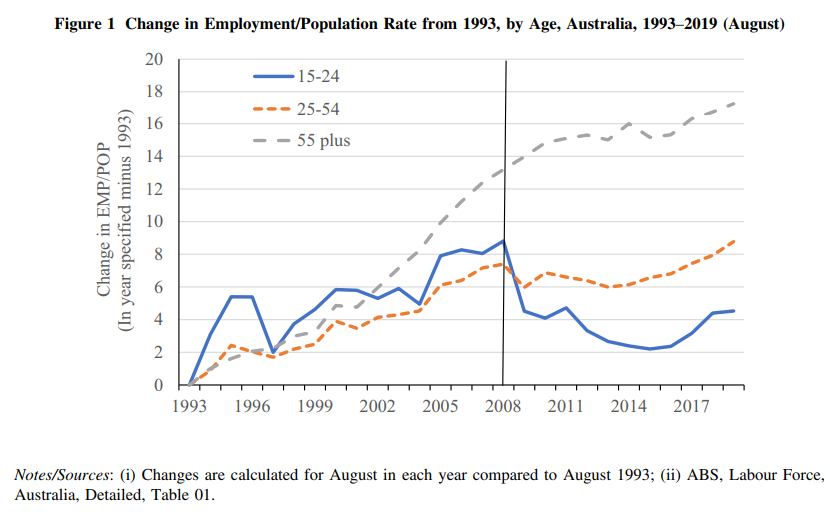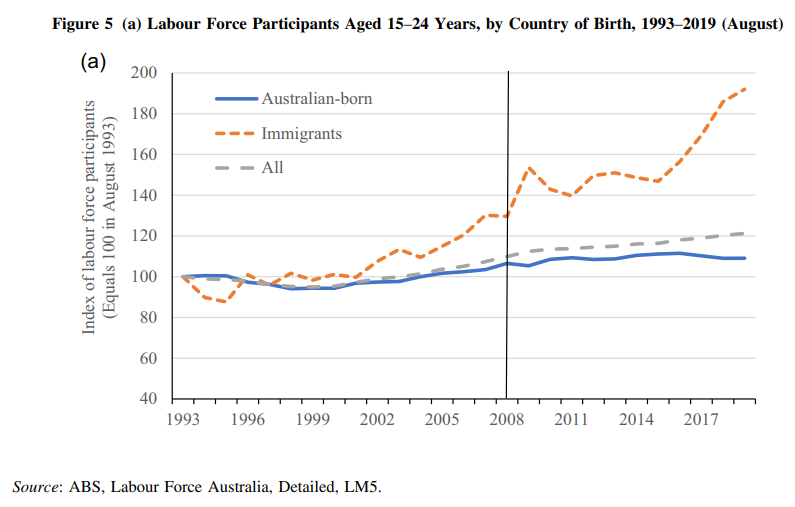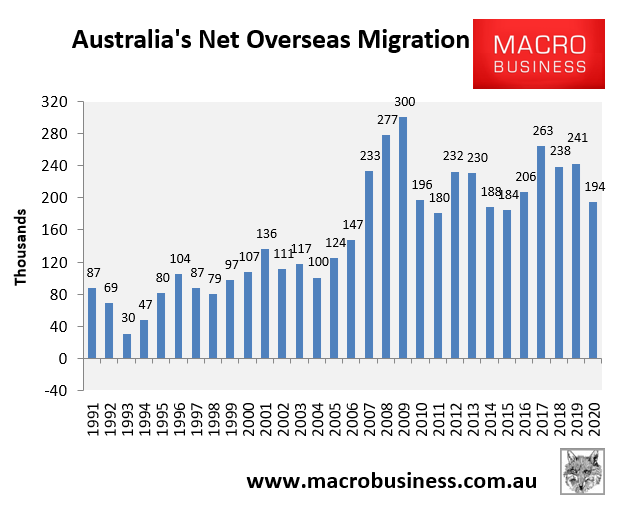Australia will re-open its international borders to overseas students, skilled visa holders and working holiday makers, with Home Affairs Minister Karen Andrews expecting that at least 200,000 migrant workers will arrive in Australia by July.
However, economists have warned that this will harm young Australians that compete for jobs , eroding their bargaining power and wage growth:
“This is the biggest early Christmas present the hospitality industry has ever received,” Restaurant & Catering CEO Wes Lambert told TND…
Angela Jackson, lead economist at Equity Economics, told TND an influx of international university students would affect younger workers who are overrepresented in the hospitality, retail and tourism sectors.
“There will be more people entering into the labour force again that will need to be soaked up before those wages start to rise,” Dr Jackson said.
Callam Pickering, Indeed’s APAC economist, said the closure of borders during COVID-19 had lifted the bargaining power of some young people.
“The main reason why the labour market for younger people has tightened so much has been because of the lack of immigration and students coming into the country,” Mr Pickering told The New Daily.
He said the return of migrants would have a “big impact” on their bargaining power.
“It could potentially slow the wage recovery in some of those industries”…
The increased vulnerability of migrant workers to exploitation is a major factor influencing the effect of immigration on wages growth…
Dr Jackson said rampant wage theft – particularly in hospitality jobs – is likely to undercut the pay and conditions of local and foreign staff.
And this can have the broader effect of suppressing wages growth across the board…
Industries in which migrant and young workers are concentrated, such as hospitality, also have much higher rates of wage theft across Australia.
Dr Jackson said that because overseas workers are more likely to be victims of wage theft, their return may make exploitation more common.
Our main contention is that worsening employment outcomes for the young in the decade following the GFC were caused primarily by increases in labour supply which have meant extra competition for jobs sought by the young, and resulted in them being ‘crowded out’ from employment…
For the young who are in full‐time education, the main source of increased labour market competition in the decade after the GFC was from within their own age group — from an increased number of young international students and holiday travellers seeking part‐time work.
Figure 5a shows the proportionate growth in labour force participants aged 15–24 years who are Australian‐born and immigrants. Between 2004 and 2019 the annual rates of growth in labour force participants in these groups were respectively 0.6 and 3.9 per cent. Over the same period, immigrants accounted for 52.6 per cent of growth in the labour force aged 15–24 years, despite being only 12.6 per cent of that labour force in 2004…
What is also critical is that the occupational composition of employment of recent young immigrants (aged 15–24 years who arrived in the last 2 years) is similar to full‐time students of the same age (Australian‐born and immigrants who had not arrived in the past 2 years). Young newly arrived immigrants are therefore most likely to be seeking jobs in the same small set of occupations into which it has been shown that young persons in full‐time education are largely segmented. This suggests that the increase in labour supply by young immigrants post‐GFC substantially increased competition for employment in those occupations…
For young persons who are not attending education full‐time, increased labour market competition has come from relatively strong and steady growth in aggregate labour supply…
In the years prior to the GFC the increase in labour supply was outpaced by employment growth. However, since the GFC that pattern has reversed. This has meant that the rate of labour underutilisation — the proportion of available hours of labour supply that are not being utilised in employment (reflected in unemployment or under‐employment) — has increased.
The increasing gap between labour supply and employment following the GFC has had a disproportionate negative impact on employment outcomes for the young…
In making forecasts of the labour market outlook for the young, it is also necessary to consider what may happen to labour supply. In the years prior to the onset of COVID‐19 there had been strong growth in aggregate labour supply; and relatively high rates of growth in the population aged 15–24 years had been projected for the 2020s. The impact of COVID‐19, of course, has been to substantially reduce that projected growth.
Australia’s net overseas migration (NOM) jumped from an average of 90,500 between 1991 and 2004 to an average of 219,000 between 2005 and 2019 – representing an annual average increase in immigration of 140%:
Such strong growth not only suppressed the wages of younger Australians in particular, but also helped to inflate the cost of housing, especially across Sydney and Melbourne.
We know the result in advance from the immigration reboot. Australia’s youth will face reduced job opportunities and wages, while also being forced to live in smaller, more expensive housing.




